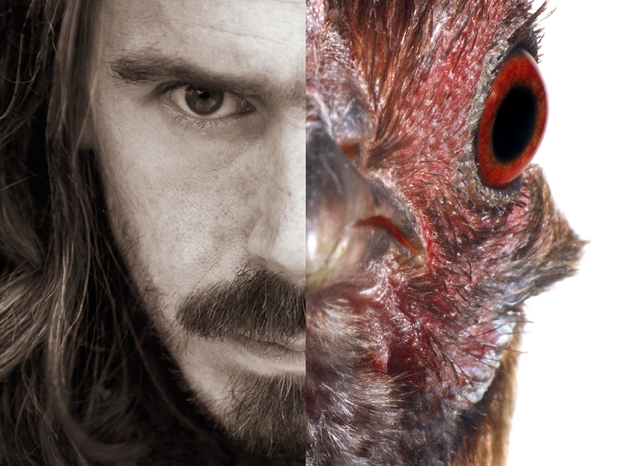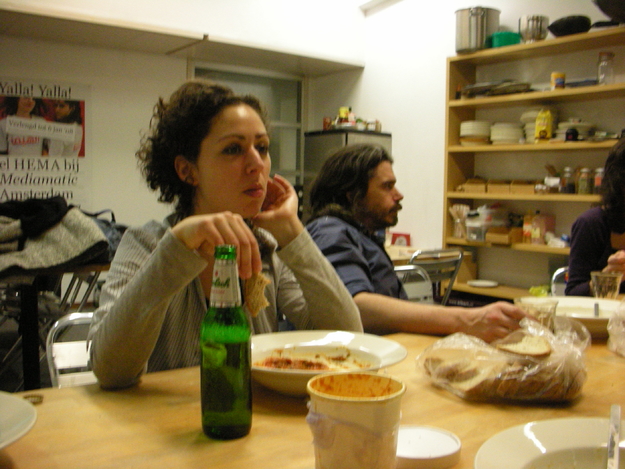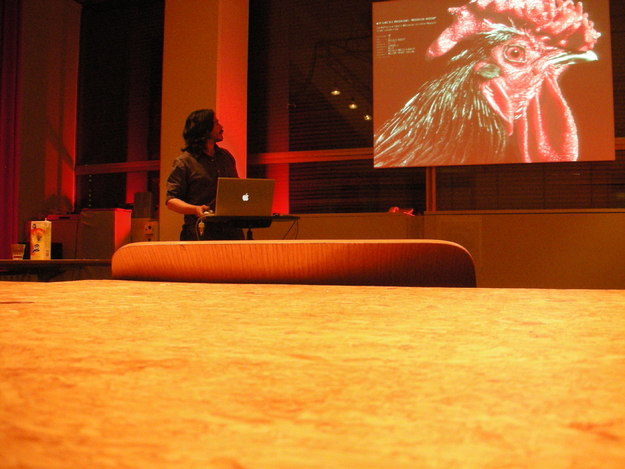The chicken is a metaphor for human existence and the egg is a metaphor for the world and the laboratory of the future.
Meet Koen
Koen Vanmechelen, who was born in 1965 in Sint-Truiden/Belgium, has been working single-mindedly for many years on his project – the Cosmopolitan Chicken. In this, art and science merge. His impressive artistic analysis tackles, in an innovative way, fundamental questions about humanity – What is life? What is our identity as a species and as an individual? As an observer, researcher and artist he knows how to intelligently question his subject, to analyse it and always expand on it, presenting it in a new light. His work is a project “in progress” in response to these fundamental human questions. The egg – synonym for life – is a perfect metaphor, but also a tool with which to develop his artistic/scientific work. On the one hand it represents fertility, the beginning, but on the other it also signifies a confined but formally ideal space, a wonderful cage that will break open, and out of which something new will be created and nobody knows exactly what. In the ongoing cycle of fertilising and being fertilised, liberating and being domesticated, the egg at the beginning is the ultimate cage. The classic question springs to mind about which came first, the chicken or the egg? It is only in the link between the disciplines of art and science that Vanmechelen sees a possibility for progress, a chance to gain answers. What are his concerns? With his projects he illustrates on a scientific basis – in a critical, original and varied way – crucial ethical issues of our society related to globalisation, racism, cloning and genetic manipulation.
Consequently, scientific documentation of the project also has to be kept up to date and Vanmechelen is constantly exchanging ideas with specialists from the world of medicine and science. His many years of friendship and collaboration with Prof. Dr. Willem Ombelet, head of the “Genk Institute for Fertility Technology” culminated in his design for seven medical rooms and corridors from the hospital’s fertilisation ward, creating the varied installation Born.
In 2000, Koen Vanmechelen launched his Cosmopolitan Chicken Project, which documents the crucial role of the chicken in his work. The artist started crossing breeds of chicken from different countries – currently the eighth generation is alive – with the aim of eventually returning to the “Bankiva chicken”, the so-called “original chicken” from the foot of the Himalayas. This creative intervention not only occurs in nature and in Vanmechelen’s chicken coops and cages but also finds its parallel in acts of artistic creation when he “crosses” chicken specimens with other animals, like eagles, or even with artificial materials like glass. In his exhibition designs for museums and galleries he takes this further by attempting to build his own cages around his artworks and by often juxtaposing his own works with living chickens.
Vanmechelen’s clearly outlined artistic field of discussion is conveyed through a wide range of media and artistic techniques. Video, photography and installations feature as well as paintings and drawings, in which he again uses different materials and techniques – ranging from collage to light. A central role is held by his sculptural work. In this he works a lot with glass because he is particularly fascinated by its mysterious and enigmatic qualities as well as the uncanny power and significance which glass possesses in his eyes. (Dr.Agnes Husslein, Belvedere - Direkorin, Wien)






